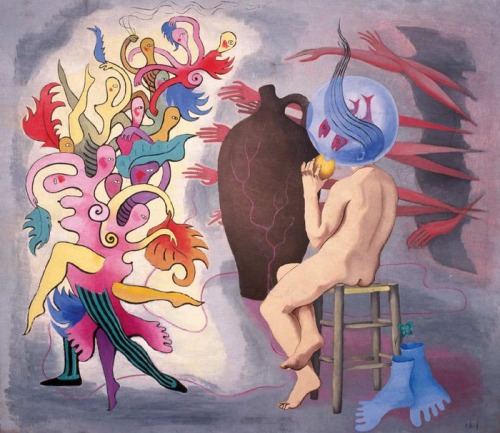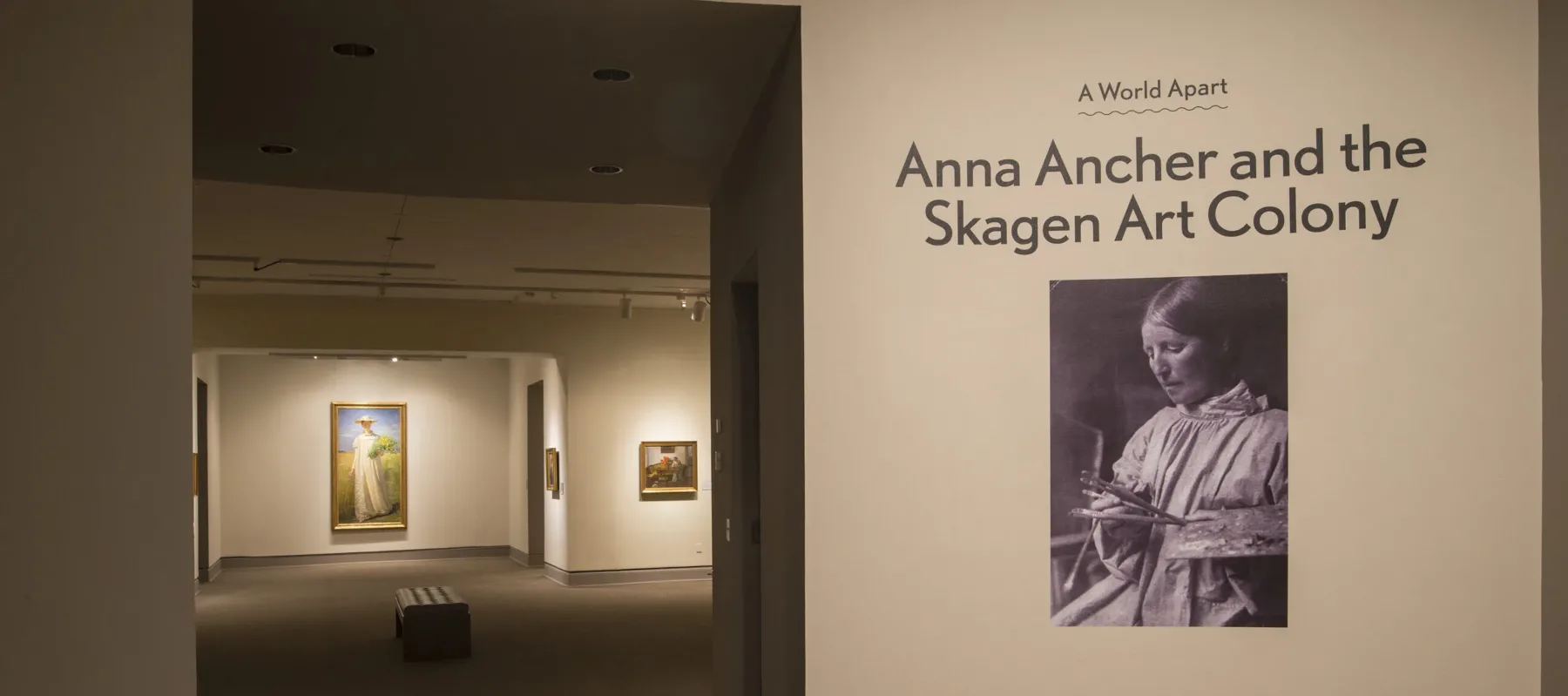In honor of A World Apart: Anna Ancher and the Skagen Art Colony, we’re researching other delightful, innovative, and interesting Danish women in the arts. Searching beyond the iconic melting clocks and gravity-defying mustaches of Surrealism, you might stumble upon the lesser-known masterpieces of Danish painter Rita Kernn-Larsen, (1904–1998) one of few women artists with a recognized role in the Surrealist movement. Working within circles in Paris and London, her works appeared alongside those of Picasso, Dali, and Magritte in the major Surrealist exhibitions of the 1930s.

Kernn-Larsen entered the art scene at a time when Surrealism flourished. Trained at the Academy in Copenhagen, Kernn-Larsen later became Fernand Leger’s star pupil in Paris and became skilled in his post-Cubist style. Her art of this period, heavy with Freudian imagery, melds figuration with abstraction. Some critics saw her dreamlike nudes as pornographic. The artist’s own mother refused to attend her first solo exhibition in 1934. Unfazed, Kernn-Larsen continued to exhibit in avant-garde shows, including one blockbuster exhibition where visitors had to use flashlights to see art in a pitch-black room.
Along with the English surrealists, she became inspired by the work of Belgian artist Paul Delvaux, whose painting Femmes-Arbres portrays women as arboreal figures—a relationship Rita also explored in her works.
In particular, her phantasmagoric painting The Party, 1937, depicts a tangle of legs and budding faces, branching outward like tree limbs. Vibrant and liberated, the dancers lean toward a restrained figure at the right. The work’s title, as well as its cheerful palette and undulating lines, make its sexual overtones seem playful.
Not long after Kernn-Larsen completed The Party, World War II began. Kernn-Larsen lived and worked in London with her Jewish-born husband, the journalist and art dealer Isaac Grünberg. Harsh reality overshadowed her surreal dreams, prompting a post-War change of scenery and style. Uprooting to the south of France, Kernn-Larsen developed a stylized naturalism, and used local subject matter, for her late artwork.
